Address
304 North Cardinal
St. Dorchester Center, MA 02124
Work Hours
Monday to Friday: 7AM - 7PM
Weekend: 10AM - 5PM
Address
304 North Cardinal
St. Dorchester Center, MA 02124
Work Hours
Monday to Friday: 7AM - 7PM
Weekend: 10AM - 5PM
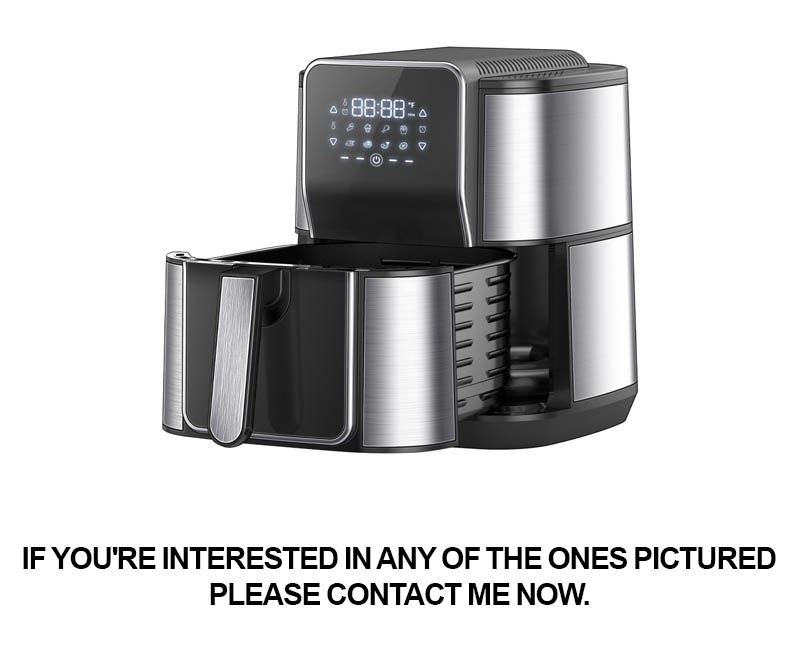
In a world where consumer preferences are as diverse as they are ever-evolving, the landscape of kitchen appliance packaging has transformed significantly. With private label brands carving out a niche in the market, understanding the intricacies of packaging design has become crucial. This piece delves into the innovative designs shaping the private label kitchen appliance market, the trends that are driving consumer choices, and the data-driven insights that are shaping the future of packaging in this sector.
The rise of private label kitchen appliances has been a transformative trend in the consumer electronics market. With the increasing demand for affordable, high-quality products, private label brands have gained significant traction among budget-conscious consumers. This shift is not just a reaction to economic pressures but also a testament to the evolving preferences and expectations of today’s shoppers.
In the past, private label appliances were often seen as inferior to their branded counterparts. However, advancements in technology and manufacturing processes have narrowed the quality gap. Now, private label kitchen appliances are offering consumers a compelling alternative that doesn’t compromise on performance or design.
One of the key factors fueling this growth is the competitive pricing strategy employed by private label brands. By cutting out the middleman and focusing on direct-to-consumer sales, these brands can offer products at a fraction of the cost of national brands. This affordability has made private label appliances an attractive option for families and individuals looking to outfit their kitchens without breaking the bank.
The expansion of online shopping has also played a pivotal role in the popularity of private label kitchen appliances. With more consumers turning to e-commerce for their shopping needs, the convenience and accessibility of private label products have surged. Online marketplaces and department stores have become hubs for these affordable alternatives, making them easily accessible to a wide audience.
Moreover, the rise of private label appliances is not just about cost savings; it’s also about the unique value proposition these brands offer. Many private label brands are known for their innovative designs and features that cater to specific consumer needs. For instance, some are designed with energy efficiency in mind, offering consumers a greener and more sustainable option for their kitchens.
Consumer trust in private label brands has also been on the rise. As these brands continue to invest in quality control and customer service, shoppers are becoming more confident in their purchases. Certifications and endorsements from consumer review websites have further bolstered the credibility of private label appliances.
The rise of private label kitchen appliances has also spurred innovation within the packaging sector. As these brands compete for shelf space and consumer attention, packaging design has become a critical differentiator. Private label brands are now investing heavily in packaging that not only protects the product but also communicates the brand’s identity and value proposition.
In terms of packaging design, there are several notable trends emerging in the private label kitchen appliance market. One of the most significant is the use of sustainable materials. Brands are increasingly opting for eco-friendly packaging that reduces their carbon footprint and appeals to environmentally conscious consumers.
Another trend is the emphasis on functionality. Packaging that offers ease of use, such as resealable bags or modular designs that simplify assembly, is becoming more popular. These features not only enhance the consumer experience but also contribute to the overall satisfaction with the product.
Furthermore, the rise of private label kitchen appliances has led to a greater focus on branding through packaging. With consumers now looking for more than just a functional product, packaging that tells a story or conveys a brand’s values can make a significant impact. This is particularly true in the online shopping environment, where packaging serves as the first physical point of contact with the consumer.
As the market for private label kitchen appliances continues to grow, so too does the need for brands to differentiate themselves. Packaging that is both visually appealing and functional is becoming a key component of a successful private label strategy. This means that packaging design is no longer just a protective layer but a tool for brand building and customer engagement.
In conclusion, the rise of private label kitchen appliances is a multifaceted phenomenon driven by economic factors, technological advancements, and changing consumer preferences. As these brands continue to innovate and refine their offerings, the packaging sector is poised to play a crucial role in their success. By focusing on sustainability, functionality, and brand storytelling, private label brands can not only compete with national brands but also exceed consumer expectations.

Private label packaging, often seen as a subtle, yet significant shift in the retail landscape, has become a staple in the kitchen appliance industry. This trend is not just about branding; it’s a strategic approach to meeting consumer demands, enhancing brand identity, and creating unique value propositions. Let’s delve into the nuances of private label packaging and why it’s becoming increasingly popular.
The core essence of private label packaging lies in its ability to offer a distinct brand experience without the high costs typically associated with name-brand products. These products are designed, manufactured, and packaged by one company, then sold under a retailer’s own brand, often at a lower price point. This approach allows retailers to establish their own identity while also providing customers with cost-effective alternatives.
Customization is a cornerstone of private label packaging. Retailers can tailor the design, colors, and even the messaging to align with their brand image and the preferences of their target market. For instance, a luxury department store might opt for a sleek, minimalist package to reflect its upscale image, while a budget-friendly retailer could choose vibrant, bold designs to stand out on the shelf.
Another key aspect is the material used in the packaging. Sustainable and eco-friendly options have gained traction, reflecting a broader consumer consciousness about environmental issues. Biodegradable, recyclable, or compostable materials are now common choices, as retailers seek to enhance their green credentials and appeal to environmentally conscious shoppers.
Packaging plays a pivotal role in the consumer experience, influencing perceptions and purchase decisions. Private label packaging often emphasizes product features and benefits, making it easier for customers to understand the value they are getting. Clear, concise language, along with appealing visuals, can help bridge the gap between product and consumer, fostering a sense of trust and familiarity.
The rise of e-commerce has also played a significant role in the evolution of private label packaging. Online retailers need to ensure their products stand out not just in search results but also in the unboxing experience. This has led to innovative packaging designs that are not only functional but also enhance the overall shopping experience, turning the unboxing into a memorable event.
In the kitchen appliance sector, private label packaging is increasingly sophisticated. It not only protects the product during shipping but also communicates the product’s functionality and ease of use. Smart features and innovative technologies are showcased through clear graphics and informative layouts, helping consumers make informed choices without the need for a salesperson.
Moreover, the role of private label packaging extends beyond just the initial sale. It can become a tool for fostering brand loyalty. Retailers that consistently deliver high-quality products in attractive packaging are more likely to retain customers. Over time, a strong private label brand can become just as recognized and respected as name-brand counterparts.
Private label packaging also serves as a platform for innovation. Retailers are not constrained by the established brands’ marketing and packaging conventions. They have the freedom to experiment with new designs, materials, and marketing techniques. This has led to some truly unique and eye-catching packaging solutions that capture the attention of consumers and set trends within the industry.
However, with great design comes great responsibility. Retailers must ensure that their private label packaging is not only visually appealing but also functional and compliant with industry standards. This requires a careful balance between aesthetics and practicality, as well as a thorough understanding of both local and global packaging regulations.
Lastly, the competitive nature of the market necessitates constant innovation and evolution in private label packaging. Retailers must stay abreast of consumer trends and technological advancements to keep their packaging fresh and relevant. This ongoing process ensures that private label packaging remains a dynamic and influential component of the kitchen appliance industry.
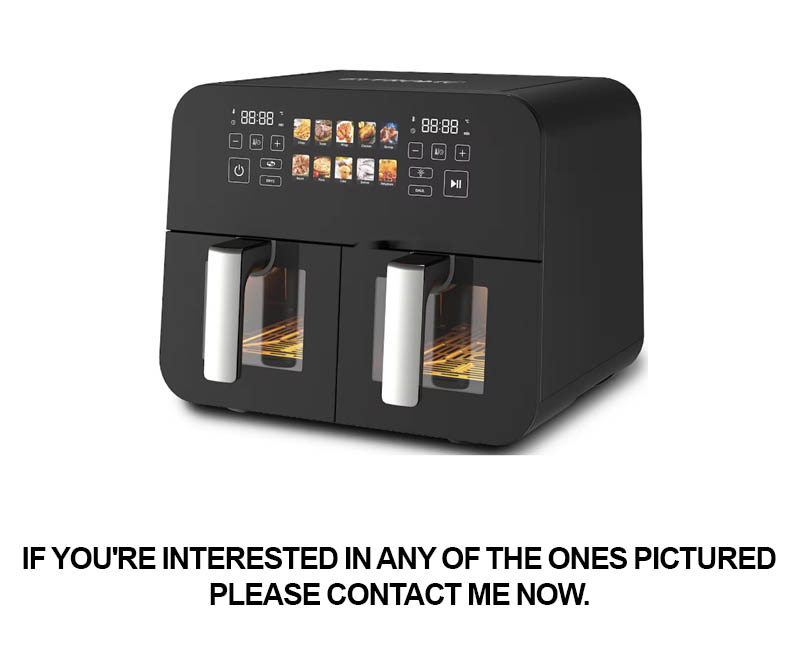
In the realm of kitchen appliances, packaging design has evolved far beyond the simple act of protecting the product. It now serves as a key differentiator in an increasingly competitive market. Here are some innovative approaches to packaging that are reshaping the landscape of kitchen appliances.
Interactive and Educational PackagingPackaging that doubles as an educational tool is gaining traction. Companies are incorporating digital elements, such as QR codes, that provide users with recipes, maintenance tips, and even the appliance’s origin story. This not only enhances the unboxing experience but also fosters a deeper connection between the consumer and the product.
Sustainable and Eco-Friendly MaterialsSustainability is a growing concern, and packaging is no exception. Brands are exploring eco-friendly materials like biodegradable plastics, recycled paper, and plant-based resins. These materials not only align with consumer values but also reduce the carbon footprint associated with packaging.
Modular and Reusable DesignsModular packaging is becoming popular, allowing consumers to disassemble the packaging and reuse it for other purposes. This could mean using the box as a storage container or repurposing the materials for home organization. Such designs not only add value but also reduce waste.
Aesthetics and Brand StorytellingPackaging is no longer just a functional necessity; it’s a canvas for brand storytelling. Intricate designs, vibrant colors, and high-quality imagery are used to convey the brand’s identity and values. This approach can evoke emotional responses and make the appliance more appealing.
Smart Packaging with IoT IntegrationThe Internet of Things (IoT) is seeping into packaging design, too. Smart packaging can communicate with the appliance itself, providing real-time information about usage, maintenance, and performance. This integration can also alert users to service needs or updates, enhancing the product’s lifecycle.
Customizable and Personalized PackagingTailoring packaging to the consumer’s preferences is a strategy that’s gaining momentum. Some brands offer customization options, allowing customers to choose colors, patterns, or even add their names to the appliance. This personal touch can make the product feel more exclusive and tailored to the individual.
Packaging that Encourages Self-AssemblyMany consumers appreciate the ability to self-assembly, as it adds a sense of accomplishment and understanding of the product’s construction. Appliance packaging is increasingly designed to facilitate this, with clear instructions and often even interactive tools like AR (Augmented Reality) guides to help customers put together their new purchase.
Space-Saving and Compact SolutionsIn today’s compact living spaces, space-saving packaging is crucial. Brands are developing flat-packaging techniques that reduce the size of the box and the carbon footprint during shipping. This approach also makes it easier for consumers to transport and store the appliance.
Safety and Child-Proof FeaturesFor appliances designed for households with children, packaging with safety features is a must. Child-proof latches, secure closures, and clear warning labels are all part of innovative packaging designs that protect the product and the user.
Multi-Functional PackagingInnovative packaging doesn’t stop at protecting the appliance; it also offers additional functionalities. Some packages are designed to include accessories, tools, or even a starting kit that gets users up and running faster. This comprehensive approach streamlines the setup process and adds immediate value.
By integrating these innovative designs, kitchen appliance manufacturers are not only protecting their products but also enhancing the overall consumer experience. As the industry continues to evolve, we can expect to see even more creative and user-centric packaging solutions that reflect the dynamic nature of modern lifestyles.

In today’s dynamic kitchen appliance market, understanding the trends and consumer preferences is paramount for manufacturers and retailers alike. As technology advances and consumer demands evolve, several key trends have emerged, shaping the landscape of kitchen appliance packaging and design.
Consumers are increasingly gravitating towards eco-friendly products, and this extends to the packaging that encases these appliances. Recyclable materials, such as cardboard and biodegradable plastics, are becoming more prevalent, reflecting a growing environmental consciousness. This shift is not just a trend but a fundamental change in how consumers perceive the sustainability of the products they purchase.
Smart home integration is another significant trend that is reshaping the market. With the rise of IoT (Internet of Things), kitchen appliances are becoming more connected, and their packaging must communicate this capability effectively. Modern packaging often includes QR codes or NFC (Near Field Communication) tags that allow consumers to immediately connect to the appliance’s features and controls through their smartphones.
Functionality is king, and packaging designs are reflecting this with a focus on ease of use and accessibility. Compact, space-saving designs are popular, especially in urban settings where kitchen space is at a premium. Packaging that highlights the appliance’s versatility, such as multi-functional ovens or refrigerators with customizable shelves, is more likely to appeal to the busy, on-the-go consumer.
Aesthetics play a crucial role in consumer preference, especially in a market where kitchen appliances are not just tools but also pieces of home decor. Sleek, minimalist designs with a focus on clean lines and neutral colors are in demand. Packaging that mimics the aesthetic of the appliance itself, with a cohesive brand image, helps reinforce the product’s appeal.
The customization trend is also influencing packaging designs. Consumers are looking for products that can be tailored to their specific needs, and this extends to the packaging. Flexible packaging that can accommodate various sizes or configurations of appliances is becoming more common. Additionally, personalized packaging with custom graphics or messaging can provide a sense of exclusivity and personal connection.
Safety and health consciousness are at the forefront of consumer minds. Packaging that ensures the appliance’s safety during transportation and storage is crucial. Features like cushioning, protective corners, and clear instructions on proper handling contribute to a positive consumer experience. Furthermore, packaging that communicates the appliance’s health benefits, such as energy efficiency or the use of non-toxic materials, is likely to resonate with health-conscious buyers.
As the market becomes more global, cultural preferences are also influencing packaging design. What is popular in one region may not resonate in another, so understanding local tastes and norms is essential. Packaging that reflects local cultural motifs or adheres to specific regulations can help products stand out in a crowded marketplace.
Innovation in materials and technology is another trend. Smart packaging that includes sensors or digital displays to provide real-time information about the appliance’s status or usage can be a game-changer. Such advancements not only enhance the consumer experience but also open up new marketing opportunities.
The rise of online shopping has also impacted packaging. Consumers expect their purchases to arrive in secure, damage-resistant packaging. Packaging that is designed to be easily opened and disposed of, yet robust enough to protect the appliance, is becoming more sophisticated. This includes considering the environmental impact of packaging materials and the potential for recycling or reuse after the product has been purchased.
Ultimately, the kitchen appliance market is evolving with consumer preferences leading the way. From eco-conscious materials to smart features and personalized experiences, packaging designers are tasked with creating solutions that not only protect the product but also tell its story in a way that resonates with today’s consumers. The success of these innovations will depend on their ability to adapt to the changing landscape and meet the expectations of a highly discerning market.
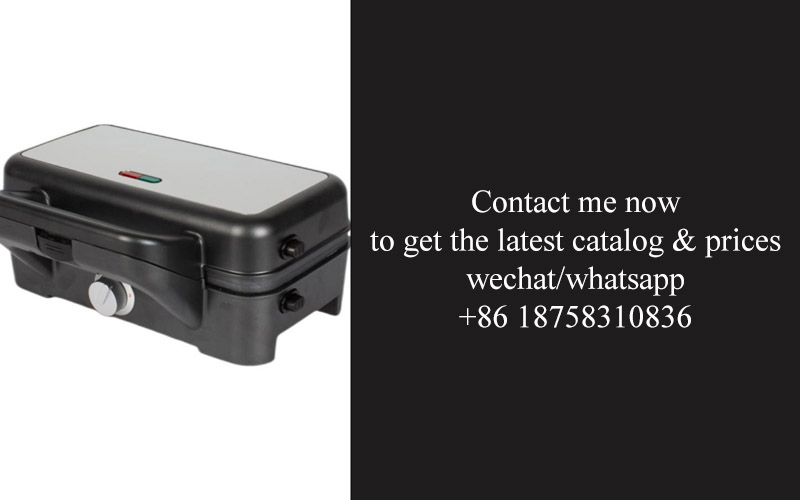
In the realm of private label packaging, data-driven insights have become invaluable tools for brands looking to stay ahead in a competitive market. These insights offer a deeper understanding of consumer behavior, preferences, and market dynamics. Let’s delve into some key data-driven insights that are shaping the landscape of private label packaging:
Sustainability is a growing concern: Consumer awareness about environmental issues has surged, leading to a significant shift towards sustainable packaging. Data shows that consumers are more likely to purchase products with eco-friendly packaging, such as biodegradable materials or recycled content. Brands are responding by investing in innovative packaging solutions that align with these green values.
Digital shopping habits: The rise of e-commerce has changed how consumers interact with packaging. Data indicates that digital packaging, which includes QR codes, augmented reality, and interactive elements, is gaining traction. These digital enhancements not only provide additional product information but also engage consumers in a more interactive shopping experience.
Packaging as a brand differentiator: In a crowded marketplace, packaging plays a crucial role in standing out. Data reveals that consumers are increasingly influenced by packaging design and functionality. Brands that invest in unique, aesthetically pleasing, and practical packaging can differentiate themselves from competitors and create a lasting impression on customers.
Personalization and customization: There’s a clear trend towards personalization in the packaging industry. Data shows that consumers appreciate the idea of customized packaging, whether it’s with their names, specific product information, or unique designs. This shift is being driven by advancements in printing technologies that make it more cost-effective to produce personalized packaging.
Nutritional and health information: As health and wellness become more important, consumers are seeking out products that align with their dietary needs. Data indicates that packaging that clearly displays nutritional information, ingredient lists, and health claims is more likely to attract and retain customers. Brands are responding by incorporating clear labeling and informative graphics into their packaging designs.
Mobile optimization: With the increasing use of smartphones, packaging that is mobile-friendly is becoming a necessity. Data shows that consumers often access product information and reviews on their mobile devices, so packaging that is easily readable and scannable on these devices is preferred. This includes using larger fonts, clear visuals, and QR codes that can be scanned quickly.
Social responsibility: Consumers are more likely to support brands that demonstrate social responsibility. Data indicates that packaging that communicates a brand’s commitment to ethical practices, fair trade, and community involvement can positively impact consumer perception and loyalty.
Packaging waste reduction: Data-driven insights are also highlighting the need for packaging waste reduction. Brands are looking for innovative ways to minimize packaging materials, use less plastic, and improve the recyclability of their products. This not only aligns with consumer expectations but also helps to reduce the environmental footprint of their products.
Emotional appeal: Packaging that evokes emotions can create a stronger connection with consumers. Data suggests that packaging with a story, a unique design, or an element of surprise can generate more interest and positive brand associations. Brands are tapping into this emotional aspect to create memorable packaging experiences.
Global market trends: Data-driven insights are also important for brands looking to expand into new markets. Understanding the packaging preferences, regulations, and cultural nuances of different regions can help brands tailor their packaging to resonate with local consumers.
By leveraging these data-driven insights, private label packaging can be crafted to meet the evolving demands of consumers, enhance brand identity, and contribute to the overall success of a product in the market.
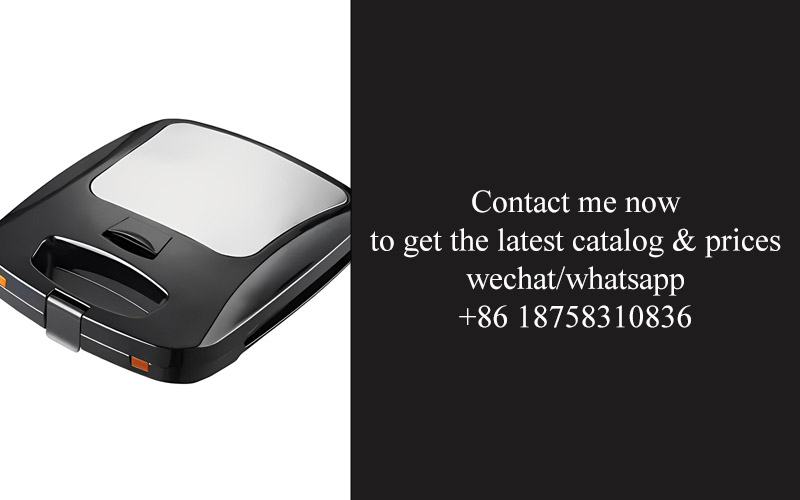
In the realm of private label kitchen appliance packaging, there are several notable success stories that highlight innovative approaches and the impact of strategic packaging on consumer perception. Here’s a glimpse into a few of these case studies:
A. The Eco-Friendly Approach: One brand, known for its commitment to sustainability, revolutionized the private label market by introducing packaging made from recycled materials. The sleek, earth-toned design not only conveyed the product’s eco-friendly ethos but also resonated with environmentally conscious consumers, leading to a significant increase in sales.
B. The Interactive Packaging Solution: A leading private label brand recognized the need to engage customers beyond the shelf. By incorporating augmented reality (AR) features into their packaging, customers could scan a QR code to unlock additional product information, cooking tips, and even a virtual demonstration of the appliance in action. This interactive experience boosted brand engagement and enhanced customer loyalty.
C. The Minimalist and Modern Aesthetic: A private label kitchen appliance line tapped into the minimalist trend by adopting a clean, uncluttered packaging design. The use of high-quality, minimalist fonts and a color palette that mirrored the appliances’ sleek profiles made the products stand out on store shelves. This aesthetic approach attracted consumers who appreciated a sophisticated yet straightforward look.
D. The Storytelling Technique: A niche brand of kitchen appliances used storytelling to create an emotional connection with their customers. Through captivating narratives on their packaging, they shared the brand’s history, craftsmanship, and the values that guided their product development. This approach not only educated consumers but also fostered a sense of belonging and loyalty among their customer base.
E. The Smart Packaging Initiative: A company specializing in smart kitchen appliances implemented smart packaging that offered real-time updates and maintenance tips. By embedding chips into the packaging, customers could access additional information and services directly through their smartphones. This integration of technology with packaging not only provided value but also showcased the brand’s forward-thinking approach.
F. The Regional Market Adaptation: A private label kitchen appliance brand achieved success by customizing their packaging to cater to regional preferences and cultural nuances. By featuring local ingredients, cooking styles, and iconic imagery, the brand was able to resonate more deeply with specific market segments, leading to stronger sales and a more localized brand identity.
G. The Collaborative Packaging Design: An emerging private label kitchen appliance brand collaborated with renowned designers to create unique and distinctive packaging. This collaboration resulted in a packaging that was as innovative as the products inside, capturing the attention of consumers and setting the brand apart from competitors.
H. The Transparent Packaging Trend: A growing trend in the private label market has been the adoption of transparent packaging, which allows consumers to see the product at a glance. This trend appeals to customers who value transparency and the ability to visually inspect the quality of the appliance before purchasing.
I. The Educational Packaging Concept: Recognizing the importance of consumer education, a private label kitchen appliance brand included detailed instructions and care guides directly on the packaging. This approach not only helped customers understand how to use the product effectively but also reinforced the brand’s commitment to customer satisfaction.
J. The Subscription-Driven Packaging Solution: A private label kitchen appliance company developed packaging designed for subscription box services. The durable, resealable containers allowed for easy storage and transport, ensuring that each appliance arrived in perfect condition. This packaging strategy was instrumental in the company’s growth within the subscription-based appliance market.
These case studies showcase the diverse strategies and creative approaches that private label kitchen appliance brands have employed to succeed in an increasingly competitive market. By understanding consumer preferences, leveraging technology, and embracing innovation, these brands have managed to make a lasting impression and capture the hearts and minds of consumers.

Navigating the competitive landscape of private label packaging in the kitchen appliance industry requires a keen understanding of the challenges and opportunities that arise. Here’s an exploration of both sides of the equation:
The complexity of supply chains and the need for efficiency have pushed manufacturers to seek innovative solutions in private label packaging. Brands are looking for ways to streamline processes without compromising on quality or presentation.
Customization is becoming a key factor in private label packaging. Consumers are no longer satisfied with generic designs; they want packaging that reflects their personal style and preferences. This shift demands a more sophisticated approach to design and production.
Sustainability is a growing concern, and private label packaging is not immune to the push for eco-friendly solutions. Brands are exploring biodegradable materials, reducing packaging waste, and finding greener ways to distribute their products.
One significant challenge is the high cost of private label packaging. The demand for quality materials and custom designs can drive up expenses, making it difficult for some brands to offer competitive pricing. Balancing cost with quality is a delicate tightrope to walk.
Brand identity and recognition are crucial for private label packaging. Standing out on shelves is a challenge, but opportunities arise with unique designs and packaging that resonate with target consumers. The key is to create a visual language that speaks to the brand’s values and product benefits.
Regulatory compliance is a persistent challenge in private label packaging. Different regions have varying standards and requirements, which can complicate the production process. Staying on top of these regulations and ensuring compliance can be a daunting task.
The rise of e-commerce has changed the game for private label packaging. Orders are often smaller and more frequent, leading to increased demand for flexible and cost-effective packaging solutions. This shift has also introduced new opportunities for innovative packaging that can enhance the online shopping experience.
Consumers are increasingly aware of the importance of health and safety. Packaging that communicates the product’s safety features or ingredients clearly can be a differentiating factor. Brands must balance informative packaging with an attractive design that doesn’t overwhelm the consumer.
The global market offers both challenges and opportunities for private label packaging. Entering new markets means understanding local customs and preferences, which can require packaging adjustments. However, it also opens doors to a broader audience and potentially higher sales.
Innovation in packaging design can address some of the biggest challenges in private label packaging. By incorporating technology like QR codes, brands can provide additional information to consumers, enhancing the customer experience and building brand loyalty.
The pressure to keep up with the latest trends in kitchen appliances often translates into rapid changes in packaging design. Brands must be agile to adapt to new trends and consumer expectations without sacrificing the integrity of their packaging.
Quality control remains a challenge, especially in large-scale private label operations. Ensuring that every package meets the brand’s standards is crucial, and it requires a robust quality assurance process.
Finally, the challenge of maintaining consistency in branding across various packaging lines can be significant. Brands must ensure that their packaging design reflects their core identity while catering to different product lines and market segments. This balance is essential for building a strong, recognizable brand presence.
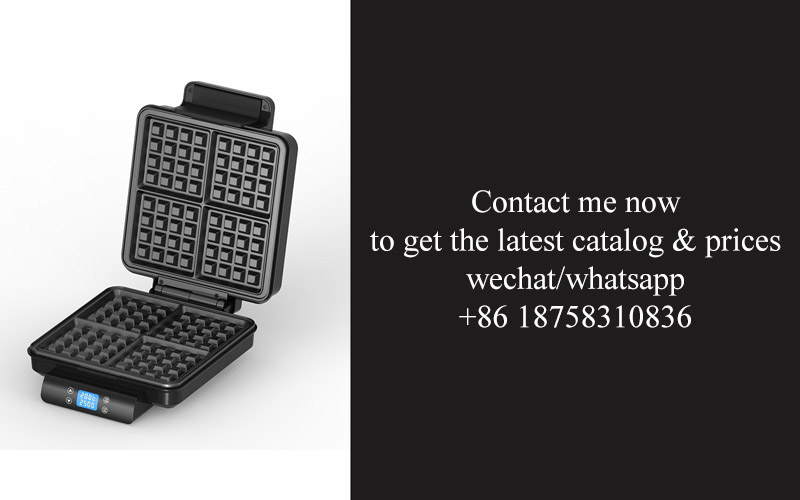
In the ever-evolving landscape of private label packaging for kitchen appliances, the industry is poised for a transformative wave of innovation. As consumer preferences shift and new technologies emerge, several key trends are beginning to take shape, pointing towards the future of packaging in this sector.
Consumer expectations are increasingly aligning with sustainability, and this trend is set to grow. Eco-friendly materials and designs are no longer just a nice-to-have; they’re becoming a must-have. Brands are investing in biodegradable plastics, recycled metals, and sustainable wood composites for their packaging, not only to reduce environmental impact but also to appeal to eco-conscious consumers.
Smart packaging technologies are also on the rise, offering more than just a way to protect the product. Incorporating sensors and interactive elements, these packages can provide real-time data on product freshness, usage, and maintenance. This level of connectivity not only enhances the customer experience but also opens up new avenues for brand engagement.
Customization is another area that’s seeing a surge in popularity. Tailoring packaging to specific market segments or even individual consumers allows for a more personalized approach. Imagine a kitchen appliance package that not only reflects the brand’s values but also caters to the specific cooking habits or dietary needs of the end-user.
The rise of e-commerce has reshaped the packaging landscape. Orders are often placed online, and the packaging must not only protect the item during transit but also facilitate easy unpacking. Lightweight and durable materials, along with innovative protective systems like air pillows or honeycomb structures, are becoming more common to ensure safe delivery without adding unnecessary weight or bulk.
As we look ahead, there’s a clear emphasis on reducing packaging waste. Brands are exploring innovative recycling programs and partnerships with local recycling facilities to ensure that packaging materials are properly handled at the end of their lifecycle. This shift also requires a more transparent approach to materials and manufacturing processes, with consumers being more informed about the environmental impact of their purchases.
Another significant trend is the integration of technology into packaging. This isn’t just about sensors and smart labels; it’s also about the packaging itself becoming part of the product experience. For example, some brands are using augmented reality (AR) packaging to provide users with interactive tutorials or recipes directly on their device.
The use of sustainable materials is expanding beyond traditional packaging components. Brands are looking at innovative solutions like mushroom packaging, which is both compostable and has a minimal carbon footprint. This kind of innovation isn’t just about the materials; it’s about the entire lifecycle of the product and its packaging.
As the market evolves, there’s also an increasing focus on the emotional appeal of packaging. A well-designed package can evoke a sense of excitement, nostalgia, or quality, which can be as influential in consumer decision-making as the appliance itself. The packaging is becoming a key differentiator in a crowded market.
Finally, there’s a growing recognition of the importance of cultural and regional diversity in packaging design. What works in one market may not resonate with consumers in another, so brands are investing in research to understand local customs, preferences, and sensibilities.
In conclusion, the next wave in private label kitchen appliance packaging will be characterized by a perfect storm of sustainability, technology, customization, and cultural sensitivity. The challenge for brands will be to stay ahead of these trends and to continuously innovate in ways that not only protect the product but also enhance the overall consumer experience.
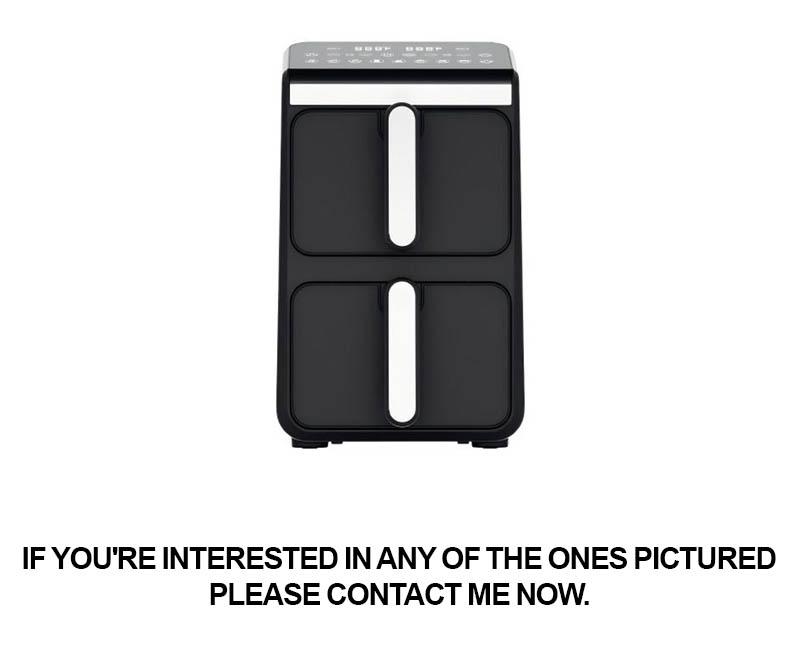
The packaging landscape for private label kitchen appliances is a dynamic and evolving field. It’s shaped by consumer behavior, market demands, and technological advancements. Understanding the nuances of this landscape is crucial for manufacturers and retailers looking to stand out in a crowded market. Let’s delve into the intricacies that define this sector, reflecting on the strategies that have proven successful and the potential for innovation on the horizon.
In recent years, there’s been a noticeable shift towards eco-friendly packaging solutions. Consumers are increasingly conscious of their environmental footprint, and this extends to the appliances they purchase. Sustainable materials like recycled paper, biodegradable plastics, and compostable starch have gained popularity. This trend not only resonates with eco-conscious consumers but also opens doors for brands to showcase their commitment to sustainability.
The customization of packaging has also become a key differentiator. With the rise of e-commerce and direct-to-consumer models, brands can tailor their packaging to reflect the unique selling points of their appliances. This includes not only the visual appeal but also the messaging, which can be localized to resonate with specific consumer segments. Brands that have mastered this approach have seen improved brand loyalty and customer engagement.
Packaging innovations often stem from consumer needs. For instance, appliances that are easy to carry and store are packaged with this in mind. This is particularly relevant for compact kitchen appliances like toasters and blenders. The packaging design should not only protect the product during transportation but also make it user-friendly for the consumer upon arrival. A prime example is the ‘pop-up’ design used by some brands, which allows customers to see the appliance without unboxing it, providing a sense of transparency and trust.
The integration of technology into packaging is another trend that cannot be overlooked. Smart packaging, equipped with QR codes or NFC tags, offers an interactive experience for consumers. This allows for instant access to product information, customer reviews, and even recipe suggestions. Such technology not only enhances the consumer experience but also provides valuable data insights for manufacturers and retailers.
In the realm of private label packaging, there’s a delicate balance between cost-effectiveness and quality. Budget constraints are a significant challenge for many private label brands, yet they must compete with established names that have a reputation for high-quality packaging. Finding innovative yet cost-efficient solutions is crucial. One strategy is to collaborate with packaging suppliers that offer a range of options, from premium materials to more budget-friendly alternatives that still maintain the brand’s image.
Brand identity and recognition are pivotal in private label packaging. Consumers often rely on visual cues to make purchasing decisions. The packaging should reflect the brand’s values and target demographic. For example, a sleek, minimalist design might appeal to a more upscale market, while a vibrant and playful design could attract a younger audience. Consistency across packaging for all products under a brand can build a strong brand identity, fostering trust and loyalty.
In the realm of private label kitchen appliance packaging, the importance of localization cannot be overstated. Cultural nuances and language barriers can significantly impact packaging design. Brands must ensure that their packaging is culturally appropriate and easy to understand for the local audience. This might involve adapting color schemes, imagery, and language to resonate with specific markets. A mistake in localization can lead to misunderstandings and negatively impact sales.
As we look to the future, one of the biggest challenges in private label packaging will be adapting to the ever-changing retail landscape. With the rise of online shopping, packaging needs to be designed with shipping and storage in mind. This includes ensuring that products are well-protected and that packaging is durable enough to withstand the rigors of delivery. Additionally, as retailers continue to seek ways to differentiate themselves, private label brands will need to find unique ways to showcase their products in an online environment where competition is fierce.
Despite these challenges, there are ample opportunities in the private label kitchen appliance packaging sector. Innovations in materials and design continue to push the boundaries of what is possible. Brands that embrace these advancements and tailor their packaging strategies to meet the demands of modern consumers are likely to see significant growth. This includes leveraging the power of data analytics to gain insights into consumer preferences and behaviors, as well as investing in sustainable practices that align with the broader environmental movement.
In conclusion, navigating the private label kitchen appliance packaging landscape requires a keen understanding of market trends, consumer preferences, and the ability to innovate while managing costs. By staying attuned to these factors, brands can create packaging that not only protects their products but also builds a strong connection with consumers, driving loyalty and sales. As the industry continues to evolve, those who are able to adapt and embrace the changing dynamics will be the ones who thrive in this competitive market.